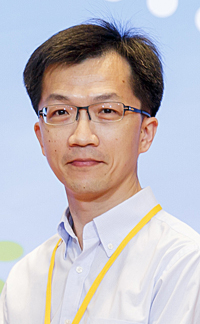P613
886-2-2789-6731
chuangtm [at] phys.sinica.edu.tw

P613
886-2-2789-6731
chuangtm [at] phys.sinica.edu.tw
Chu, Michelle / 886-2-2789-8364
michelle0831 [at] gate.sinica.edu.tw
| (1) | 2017 | 科技部吳大猷先生紀念獎 | ||
| (2) | 國內學術研究獎項 | 2012 | 建大文教基金會傑出年輕金玉學者獎 |
| 主要相關著作: |
| Nam Hyoungdo, Chen Hua, Adams Philip W., Guan Syu-You, Chuang Tien-Ming, Chang Chia-Seng, MacDonald Allan H., Shih Chih-Kang*, 2018, “Geometric quenching of orbital pair breaking in a single crystalline superconducting nanomesh network”, Nature Communications, 9(1). (SCIE) (IF: 17.694; SCI ranking: 8.1%) |
| 主要相關著作: |
| Guan S.-Y., Chen P.-J., Chu M.-W., Sankar R., Chou F., Jeng H.-T., Chang C.-S., Chuang T.-M.*, 2016, “Superconducting topological surface states in the noncentrosymmetric bulk superconductor PbTaSe2”, Science Advances, 2(11) e1600894-e1600894. (SCIE) (IF: 14.98; SCI ranking: 9.5%) |
| 主要相關著作: |
| M. P. Allan, T-M. Chuang, F. Massee, Yang Xie, Ni Ni, S. L. Bud'ko, G. S. Boebinger, Q. Wang, D. S. Dessau, P. C. Canfield, M. S. Golden & J. C. Davis*, 2013, “Anisotropic impurity states, quasiparticle scattering and nematic transport in underdoped |
| 主要相關著作: |
| M. P. Allan, A. W. Rost, A. P. Mackenzie, Yang Xie, J. C. Davis*, K. Kihou, C. H. Lee, A. Iyo, H. Eisak and T.-M. Chuang*, 2012, “Anisotropic Energy Gaps of Iron-Based Superconductivity from Intraband Quasiparticle Interference in LiFeAs”, SCIENCE, 336, 563-567. (SCIE) (IF: 63.832; SCI ranking: 2.7%) |